Picture this: you are walking uphill with binoculars in hand, and you see a Golden Eagle flapping its wings right above your head. Beautiful, isn’t it? Couple it up with nature’s noises, misty winds, and a single beam of sunlight entering the forest area from the canopy of trees.
Already got carried away? This is not even the beginning of all that Uttarakhand has to offer for bird watchers! If you are a bird enthusiast or someone who is just exploring the field in this regard, this bird watching guide will help you in numerous ways!
Read on to get an idea of places to visit, what all you can expect from Devbhoomi Uttarakhand, the “paradise for bird lovers”, and much more…
Table of Contents
Why is Bird Watching Famous in Uttarakhand?
Before you proceed towards your favorite destination, it is worth doing some background research. Bird watching in Uttarakhand is famous due to a host of reasons:
- Uttarakhand has around 700+ bird species across all its districts, making it a good bird-watching destination.1
- There are around 1,300+ bird species found in India, and around 700 of those species can be seen in Uttarakhand. It shows how diverse Uttarakhand’s avian ecosystem is.2
- Bird lovers never return dissatisfied from this place, as there is something for everyone, irrespective of the area you visit or the time of the month.
- It can be termed as the favorite destination for migratory birds, all thanks to the surroundings and weather. The fleets arrive from Africa and Siberia, and the breeds are exotic.
- There is an added touch of culture and trekking adventures for those interested.
- The places mentioned in the upcoming list are accessible without much struggle.
- Since birdwatching has been prevalent in Uttarakhand for a long time now, guides are available easily, making your adventure much easier.
Top 24 Bird Watching Places in Uttarakhand
The following list has necessary details regarding the best bird watching places in Uttarakhand, enough to help you decide your next destination. The places have been categorised area wise to further help you choose:
Uttarkashi
1) Gangotri Gaumukh Trail
This trail is situated in the Uttarkashi district, within the Gangotri National Park. You will have to begin from Gangotri town, which is located at an altitude of 3,100 meters, and then move towards Gaumukh, which is a part of the Gangotri Glacier, situated around 3,900 meters.
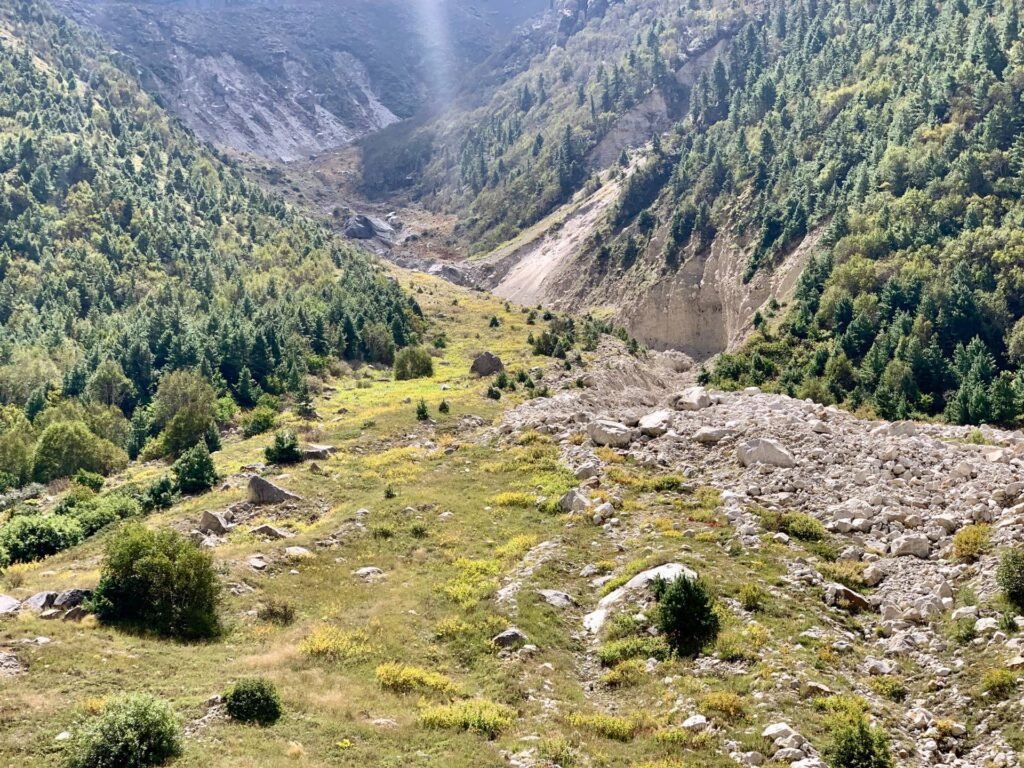
This high-altitude trek presents you with beautiful views of glaciers, snow-capped peaks, and alpine meadows. The relatively undisturbed environment within the national park will help you peacefully gaze at all the available high-altitude avian species.
Types of Birds Found in Gangotri:
You can spot the Himalayan Monal, which is Uttarakhand’s state bird, along with the Snow Partridge, Himalayan Snowcock, Golden Eagle, Lammergeier, and various finches such as rosefinches and accentors, as well as high-altitude warblers.
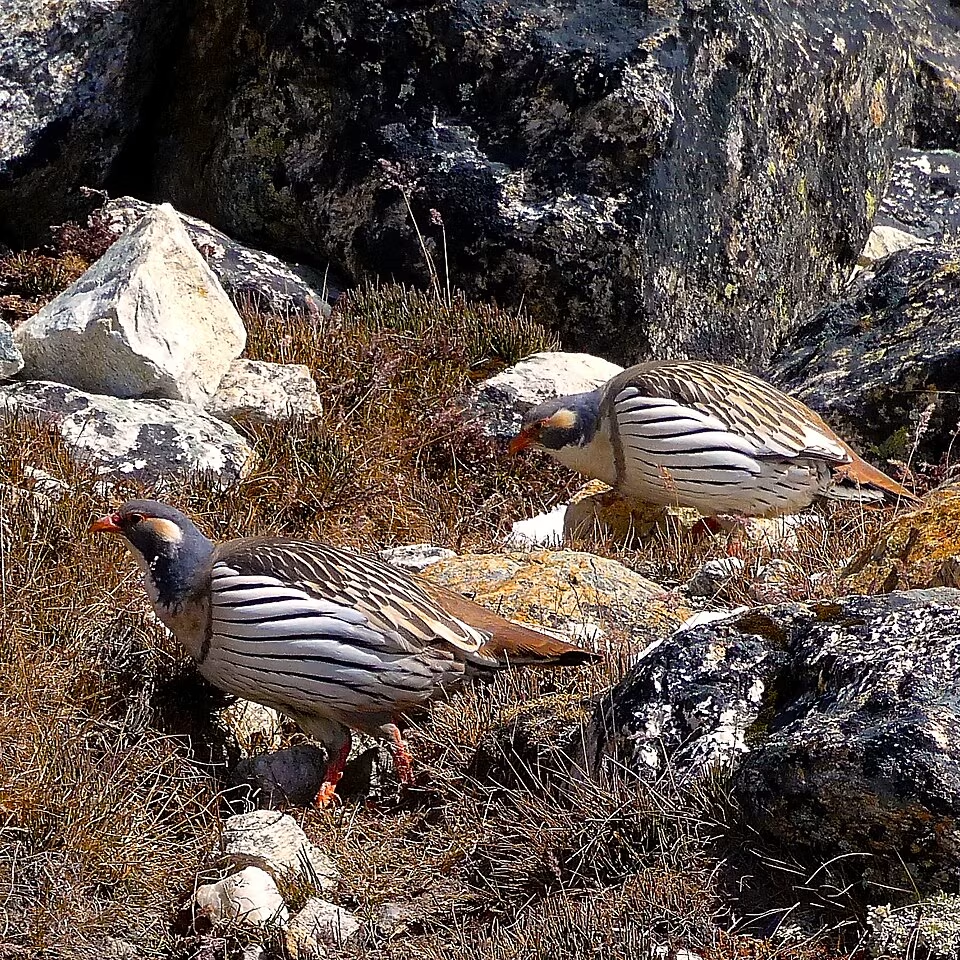

Best time to visit:
The ideal periods to visit are from May to June and again from September to October, as these months offer pleasant weather conditions and clear skies for optimal bird watching. If you are into trekking as well, it would be an added advantage.
Nearby Attractions:
Visitors can explore the Gangotri Temple, Tapovan, Nelong Valley, Harsil and Sattal.
2) Dodital
Approximately 25 km from Uttarkashi town, at a height of 3,310 meters, Dodital is a must visit if you wish to take your bird watching experience one level higher.
There is a crystal clear freshwater lake surrounded by dense oak and pine forests, creating isolated microhabitats for specialized bird species. The trail to reach Dodital passes through many different types of tree species and this will indirectly offer you diverse birding opportunities.
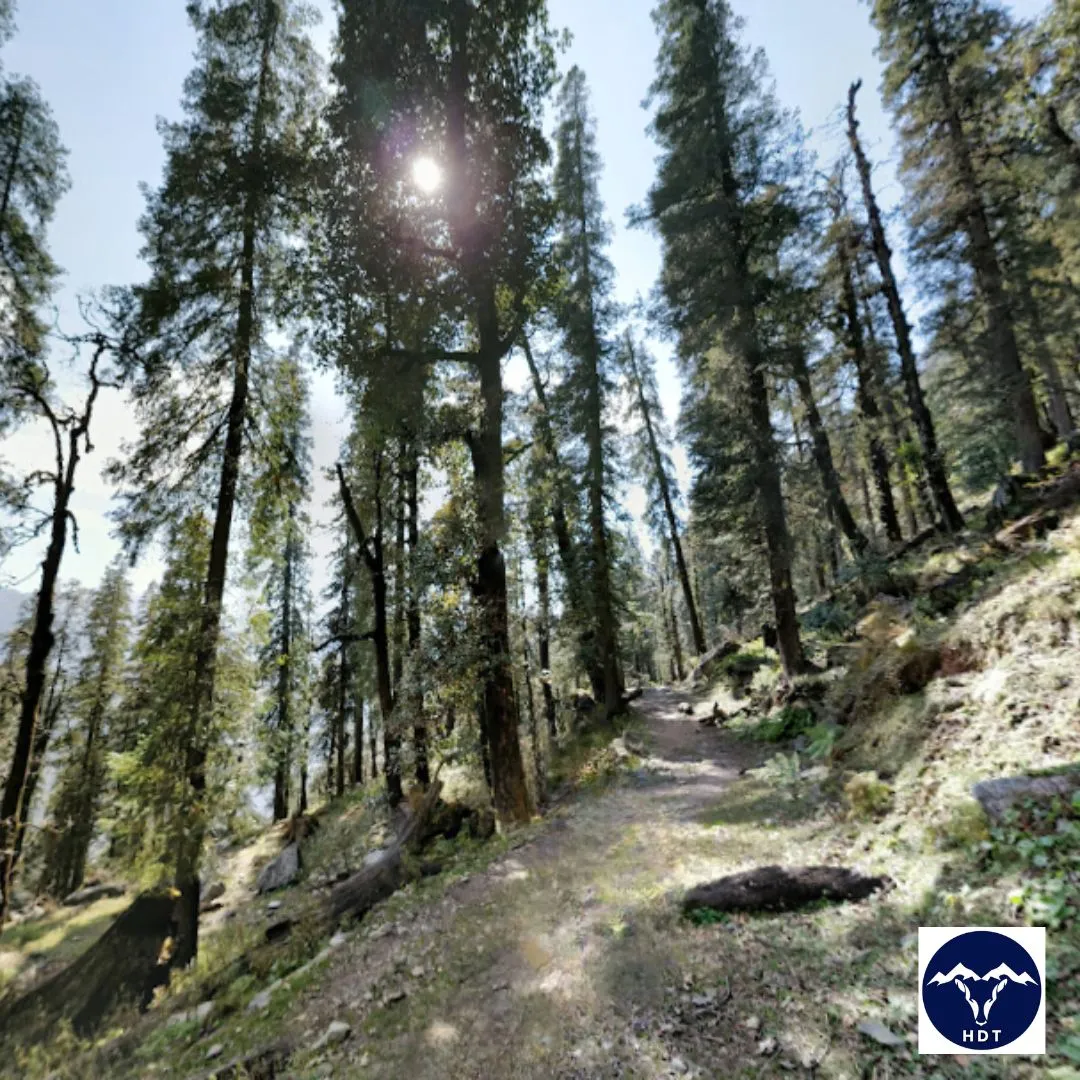
Types of Birds Found in Dodital:
Himalayan Woodpecker, White-throated Laughingthrush, Variegated Laughingthrush, Fire-tailed Sunbird, Himalayan Monal, and various thrushes and finches adapted to high-altitude forest ecosystems.
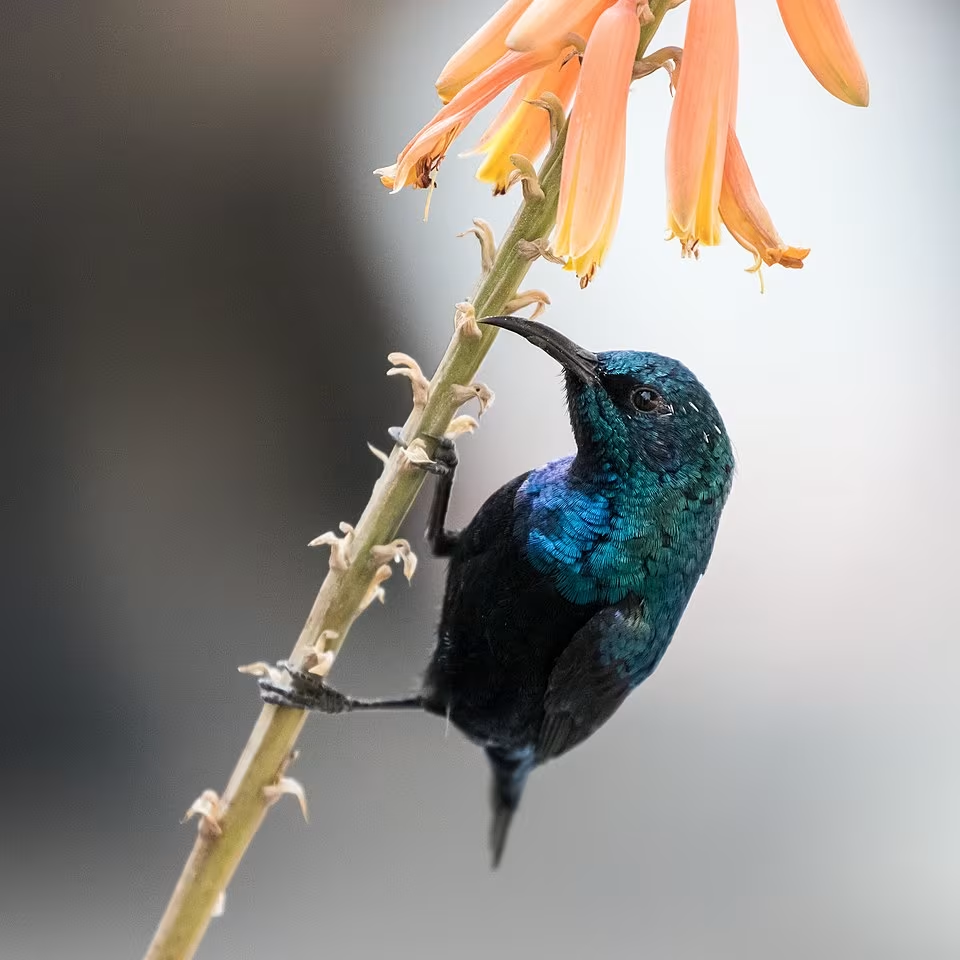

Best Time to Visit
April to June and September to November, avoiding monsoon season when trails become slippery.
Nearby Attractions:
Ancient Shiva temple beside the lake, trek extension to Darwa Pass, and you can even enjoy the culture in the village of Sangamchatti.
Rudraprayag
3) Deoria Tal
Deoria Tal is situated in the Rudraprayag district and you can reach this beautiful place by a short trek from Sari village, which is located near Ukhimath. Deoria Tal is located at an optimum place which provides you a clear view of the beautiful Chaukhamba peaks. The name can be translated as four poles, indirectly defining the view you get from the top.
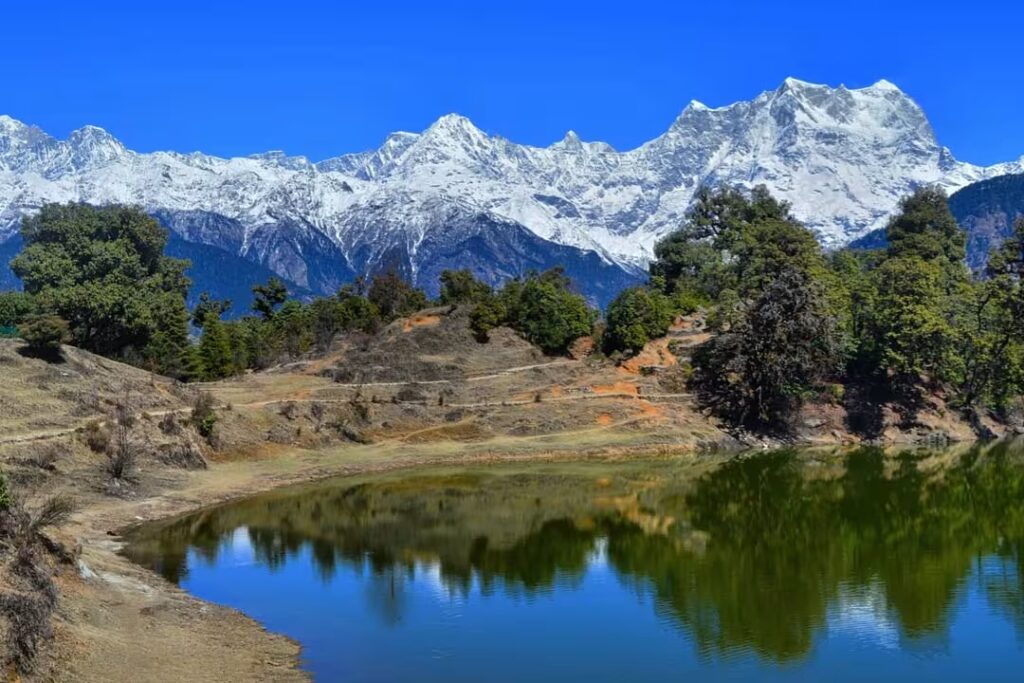
The lake itself and the surrounding forested area provide a habitat for a variety of mid-altitude Himalayan birds. It is very common to see birds flocking down to drink water from the lake. The daytime reflections of the snow-capped peaks in the waters of the lake will further enhance your bird watching experience.
Types of Birds Found in Deoria:
Bird watchers can observe the Himalayan Bulbul, Black Bulbul, various species of tits including the Green-backed and Black-throated Tit, warblers such as Hume’s and Tickell’s Leaf Warbler, and flycatchers like the Verditer and Grey-headed Canary Flycatcher.
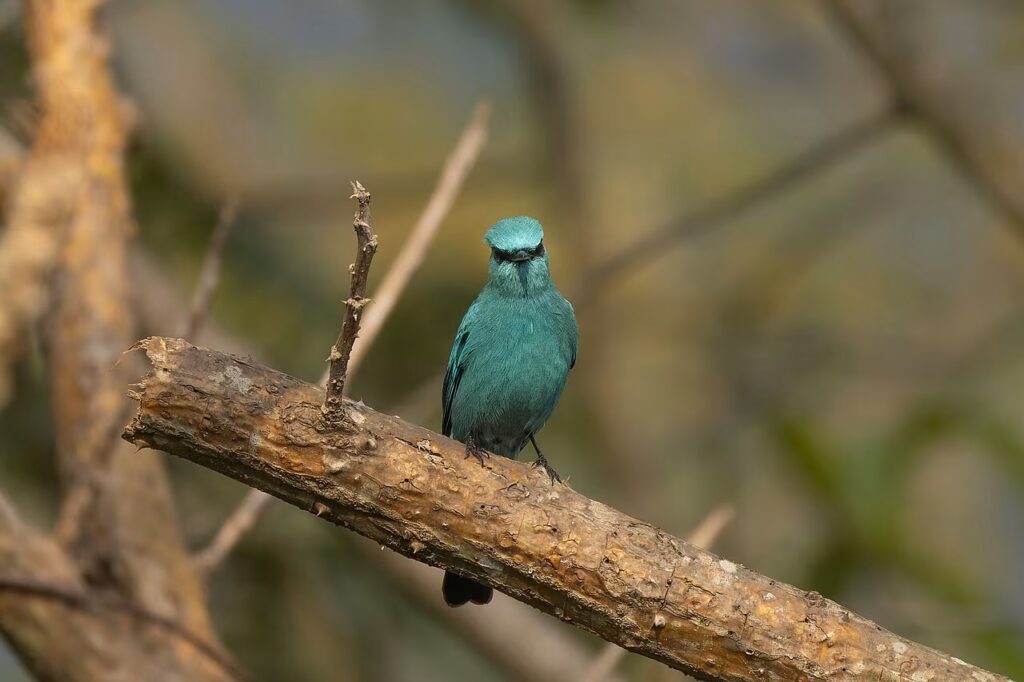
Best Time to Visit:
The ideal times to visit are from March to June and again from September to November, as these months are best for accessibility as well as availability of birds.
Nearby Attractions:
You can pay homage at the Tungnath Temple, which is the highest Shiva temple in the world, and trek to the Chandrashila peak, which is the best place to have a birds eye view of the Himalayas.
4) Chopta
Located within Kedarnath Wildlife Sanctuary in the Western Himalayas, Chopta is one of the most beautiful bird-watching destinations in the Rudraprayag district. It is at an elevation of about 2,680 meters.
Often called “Mini Switzerland of India,” Chopta has a lot to offer in terms of scenic views surrounded by dense forests of rhododendron, oak, deodar, and Himalayan fir. The area forms part of a critical wildlife corridor within the sanctuary. (Geographical fact – the area surrounding a wildlife sanctuary is known as a conservation reserve)
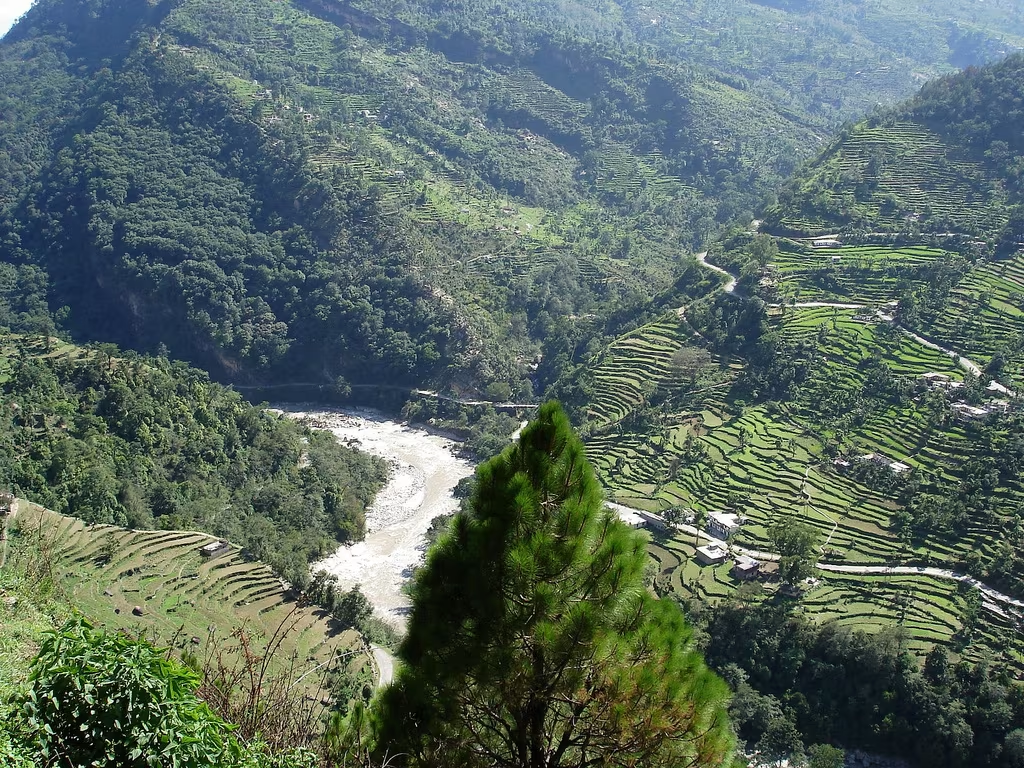
Types of Birds Found in Chopta:
The area offers you access to over 240 bird species including Himalayan Monal, Griffon Vulture, Scarlet Finch, Mountain Hawk Eagle, GoldenEye, Hill Partridge, and numerous Western Himalayan specialties.

Best Time to Visit:
April to June for breeding birds and September to November for comfortable weather and good visibility.
Nearby Attractions:
Tungnath temple (highest Shiva temple), Chandrashila peak, Deoria Tal, and the expansive routes of Chopta offer a lot of peaceful times.
Pithoragarh
5) Askot Wildlife Sanctuary
The Askot Wildlife Sanctuary is located in the Pithoragarh district and shares a border with Nepal. People mostly visit this place on their trip to Nepal by road, you can also do the same if you like. The sanctuary is widely recognized for its unique species including the musk deer.
The sanctuary has a collection of rare and endemic species that are unique to this region. One gets access to these birds as they move further inside the sanctuary, and it is very common to spot harmless wild animals thriving all along.
Types of Birds Found in AWS:
Within the sanctuary, bird watchers have the opportunity to see the Cheer Pheasant, Kalij Pheasant, Himalayan Monal, various species of laughing thrushes including the White-throated and Variegated Laughingthrush, woodpeckers such as the Great Slaty Woodpecker, and various raptors like the Mountain Hawk-Eagle.
Best Time to Visit:
The ideal times to visit the Askot Wildlife Sanctuary for bird watching are from March to June. You might want to visit in the winter season for migratory species, but stay mindful of slippery routes.
Nearby Attractions:
Visitors to the area can also explore Dharchula town, Pithoragarh town, and undertake the Milam Glacier trek. Keep in mind that this trek requires obtaining necessary permits beforehand. Thus, arrange everything well in advance for a smooth experience.
6) Munsiyari
Located in the northern side of Pithoragarh district at an height of around 2,200 meters. You will have to travel for 135 km from Pithoragarh town, but the beautiful route would be worth the toils of the journey.
You get to see the top of Panchachuli peaks and Munsiyari is best known for high-altitude bird watching. There is a mix of Indian, Tibetan and Nepali birds because of the location, and thus you will find new bird species everytime you visit.
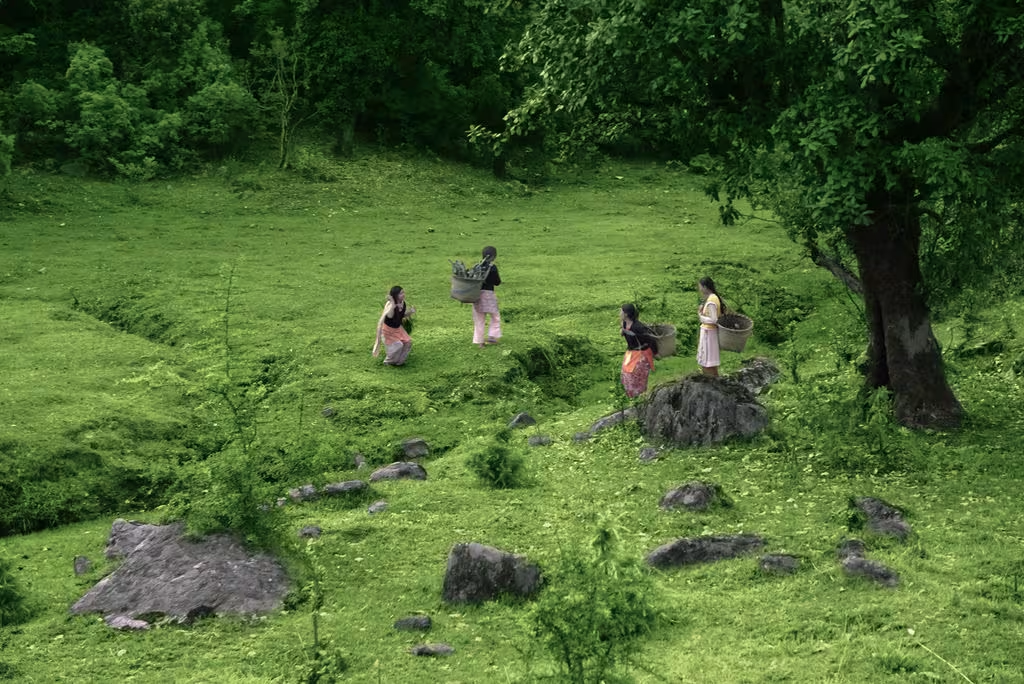
Types of Birds Found in Munsiyari:
Blood Pheasant, Satyr Tragopan, Himalayan Monal, Ibisbill, Grandala, Golden Bush Robin, and numerous high-altitude specialists including rosefinches and accentors. Ibisbill is spotted near rivers, and they exist in large groups.
Best Time to Visit:
April to June and September to November when mountain views are clearest and bird activity is high.
Nearby Attractions:
Khaliya Top trek, Birthi Falls, Darkot village, Milam Glacier trek, and Tribal Heritage Museum showcasing Bhotia culture.
Tehri Garhwal
7. Dhanaulti Eco Park
The Dhanaulti Eco Park is located in the Tehri Garhwal district and is a popular hill station that is situated near Mussoorie. The eco-parks in Dhanaulti are developed and very well-maintained by the local forest department.
The well-maintained green spaces and the surrounding natural forests in Dhanaulti attract a diverse variety of both resident and migratory bird species, making it a favorable spot for beginner level and experienced bird watchers.

Types of Birds Found in Dhanaulti:
Visitors to the Dhanaulti Eco Park and its vicinity can observe the Himalayan Bulbul, Black Bulbul, various species of tits including the Great Tit and Black-throated Tit, warblers such as the Common Chiffchaff, and woodpeckers like the Himalayan Woodpecker.

Best Time to Visit:
Dhanaulti enjoys pleasant weather throughout the year, making it a suitable destination for bird watching in different seasons. Summer offers mild and enjoyable conditions, while winter brings snowfall, creating a different but equally beautiful environment.
Nearby Attractions:
Travelers can also explore the Surkanda Devi Temple, visit Tehri Dam, and Jabar Khet Nature Reserve.
8. Kanatal Forest
Located approximately 12 km from Dhanaulti and 78 km from Dehradun, at an altitude of about 2,590 meters.
A relatively undiscovered birding paradise with less tourist traffic than nearby destinations, allowing for more peaceful bird watching experiences. The old-growth forests consist primarily of oak, pine and rhododendron, which are the favorite homes for most birds you will find in this area.
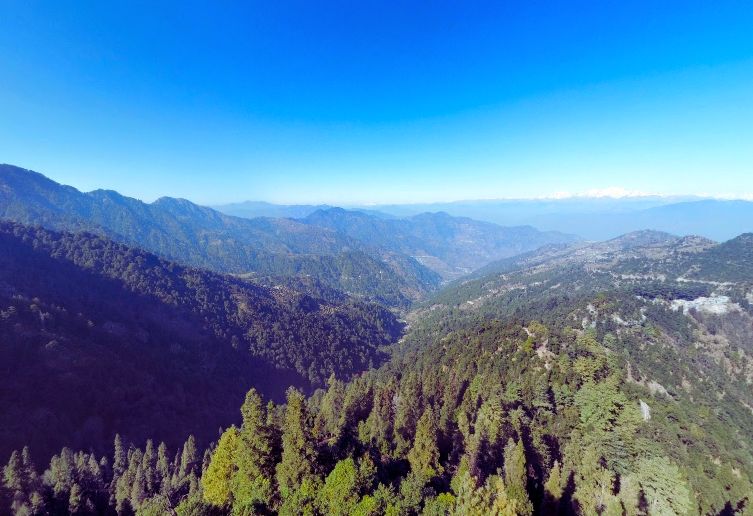
Types of Birds Found in Kanatal:
Kalij Pheasant, Great Barbet, Blue-throated Barbet, Rufous-bellied Niltava, Green-backed Tit, Black-faced Warbler, White-tailed Nuthatch, and a variety of woodpeckers and thrushes.
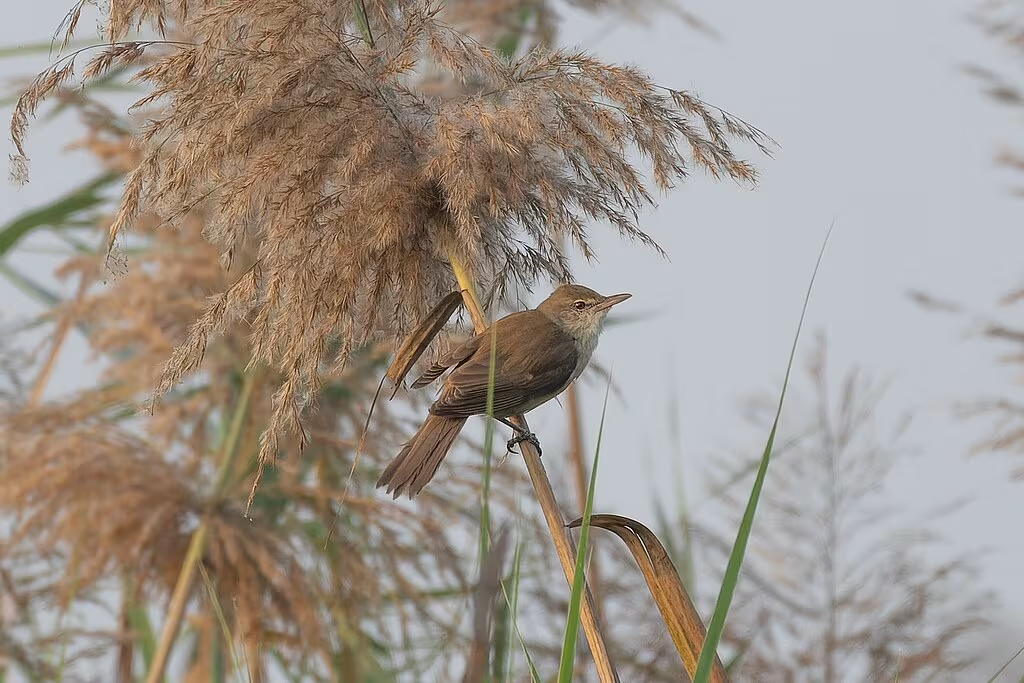
Best Time to Visit:
March to June and late September to November when birds are most active and visible. You can visit during the rainy season as well, but make sure the roads are motorable.
Nearby Attractions:
Kodia Jungle, Tehri Dam, Kaudia Forest (home to unique varieties of flowers), camping sites, and traditional Garhwali villages with local cultural experiences.
Pauri Garhwal
9. Khirsu
Khirsu is located in the Pauri Garhwal district and is a peaceful hill station that offers a blend of beauty and peace for whoever wishes to have a peaceful vacation along with a blissful bird watching experience.
The presence of oak and deodar forests, along with apple orchards in the nearby areas of Khirsu, creates an environment that attracts a variety of different bird species.
Types of Birds Found in Khirsu:
Bird watchers in Khirsu can observe the Himalayan Bulbul, Black Bulbul, various species of warblers such as the Tickell’s Leaf Warbler, tits including the Green-backed Tit, and finches like the Common Rosefinch.

Best Time to Visit:
The most favorable times to plan a visit to Khirsu for bird watching are from March to June and again from September to November.
Nearby Attractions:
Travelers can also explore the town of Pauri and visit Srinagar (the Uttarakhand one), which is another significant town in the Garhwal region. En route, you can have a look at the beauties of Alaknanda river.
10) Lansdowne
Located in Pauri Garhwal district, approximately 250 km from Delhi at an altitude of 1,700 meters.
A cantonment town established by the British, Lansdowne offers well-preserved colonial architecture surrounded by oak, blue pine and rhododendron forests. You might have heard of it as a tourist destination, but not as a bird watching haven, though it has a lot to offer.
Types of Birds Found in Lansdowne:
Striated Laughingthrush, Red-billed Blue Magpie, Rufous-bellied Woodpecker, Asian Barred Owlet, Black-headed Jay, Black Francolin, Kalij Pheasant, and numerous warblers and flycatchers.
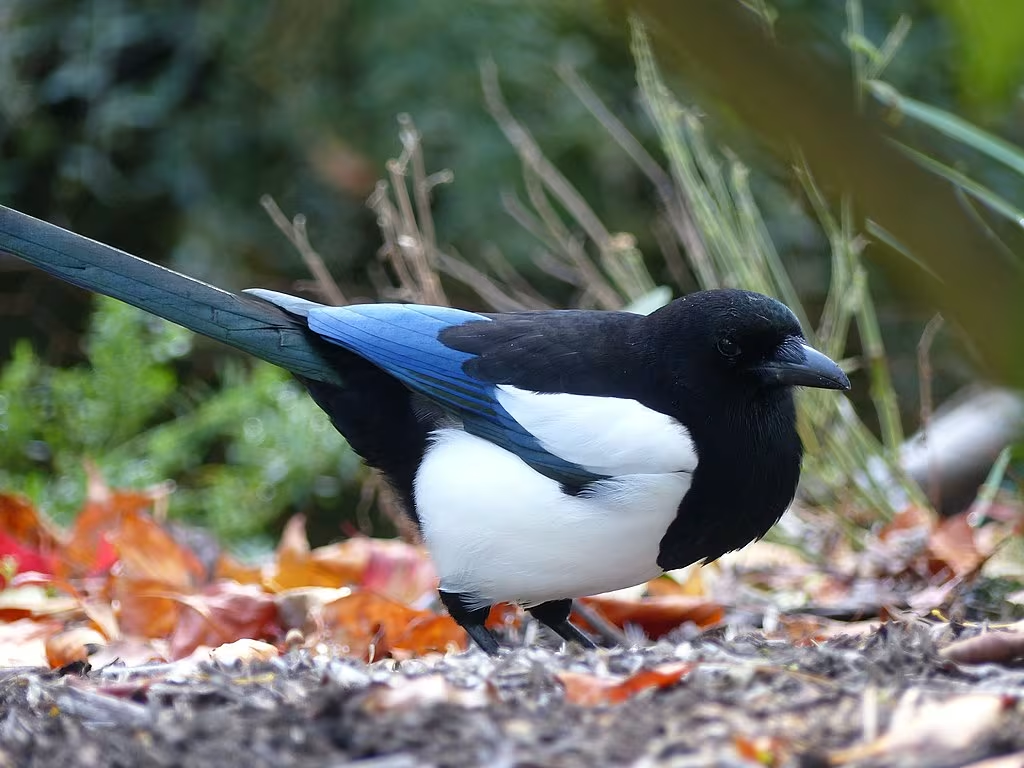
Best Time to Visit:
March to June and September to November, avoiding monsoon season.
Nearby Attractions:
Bhulla Tal (lake), St. Mary’s Church, Garhwal Rifles Regimental War Memorial, Durga Devi Temple, and Tarkeshwar Mahadev Temple located 38 km away.
Champawat
11) Mayawati Ashram
The Mayawati Ashram is located in the Champawat district and is a serene spiritual retreat near the town of Lohaghat. The route passes through dense forests, and you should travel safely.
The peaceful and heavily wooded surroundings of the ashram naturally attract a variety of forest bird species, making it one of the best spots for bird watching.
Types of Birds Found:
Bird watchers visiting the Mayawati Ashram and nearby area can observe various species of bulbuls, including the Red-vented and Himalayan Bulbul, babblers such as the Jungle Babbler, and sunbirds like the Purple Sunbird.
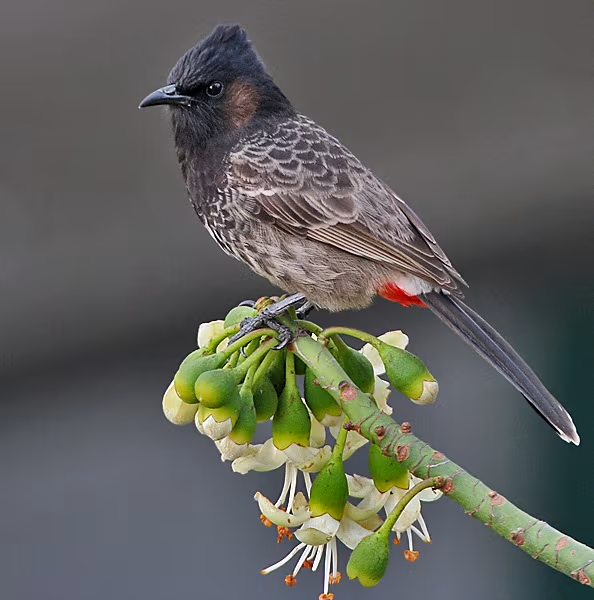
Best Time to Visit:
The Mayawati Ashram enjoys pleasant weather during the summer months, making it a suitable time to visit for bird watching and experiencing the serene atmosphere.
Nearby Attractions:
You can also explore the town of Lohaghat and visit Pancheshwar, which is the meeting point of the Saryu and Mahakali rivers.
12) Abbott Mount
Located 7 km from Lohaghat in Champawat district, at an elevation of around two thousand meters.
A quaint hill station established during the British colonial era with well-preserved cottages scattered across forested slopes. The undeveloped nature of the area with minimal commercial tourism has helped preserve bird habitats, making it excellent for serious birders seeking quietude.
Types of Birds Found in Abbott:
Himalayan Flameback, Black-headed Jay, Maroon Oriole, Blue-capped Rock Thrush, Rufous-bellied Niltava, Grey Treepie, Himalayan Bulbul, and a variety of tits and warblers.
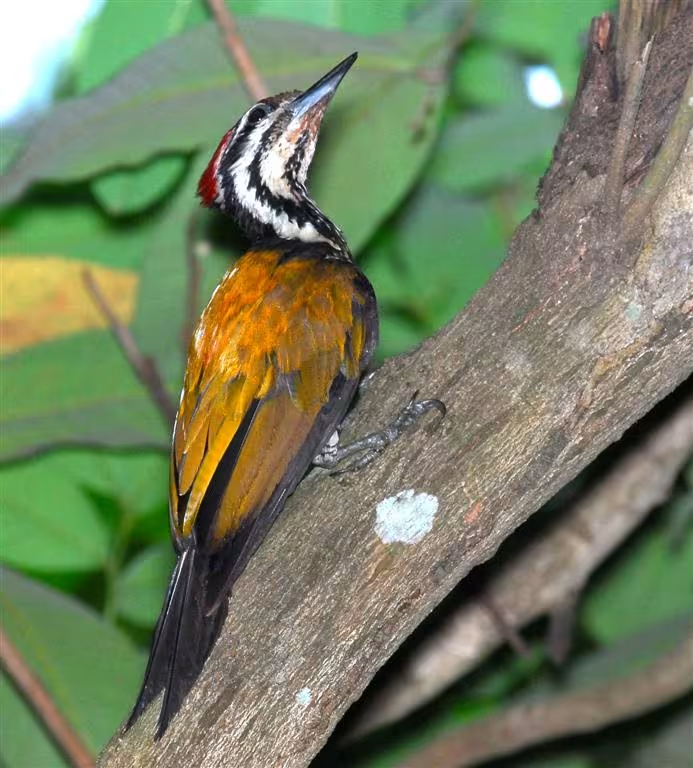
Best Time to Visit:
March to June and October to November for optimal bird watching conditions.
Nearby Attractions:
Pancheshwar (fishing spot on Kali River), Mayawati Ashram, Champawat town with lots of historical temples, Ek Hathiya Ka Naula (ancient water source), and simply gazing at the nearby Himalayan peaks.
Haridwar
13) Rajaji National Park
Rajaji National Park is strategically located near Haridwar and Dehradun, spanning across three districts in Uttarakhand. The park’s proximity to major cities makes it easily accessible by road and rail, attracting birdwatchers from all over North India. Its entrances, such as Chilla, Motichur, and Ranipur, are well-marked and convenient for tourists. The park’s setting at the foothills of the Shivalik range provides a lush, scenic backdrop for wildlife enthusiasts.
A vital part of the Shivalik ecosystem, Rajaji National Park is celebrated for its diverse eco-zones, including dense forests, grasslands, and riverine habitats. This variety supports a remarkable range of flora and fauna, making it a biodiversity hotspot. The park is also known for its conservation efforts, especially of endangered bird species. Its rivers and streams further enhance its ecological richness, offering unique bird watching experiences.
Types of Birds Found:
Birdwatchers can spot the iconic Great Hornbill, Kingfishers, Indian Rollers, and Woodpeckers within the park. Other sightings include Pied Kingfishers and Crested Kingfishers along the riverbanks. The park’s varied terrain ensures regular encounters with both resident and migratory birds. This diversity attracts both amateur and seasoned birders throughout the year.
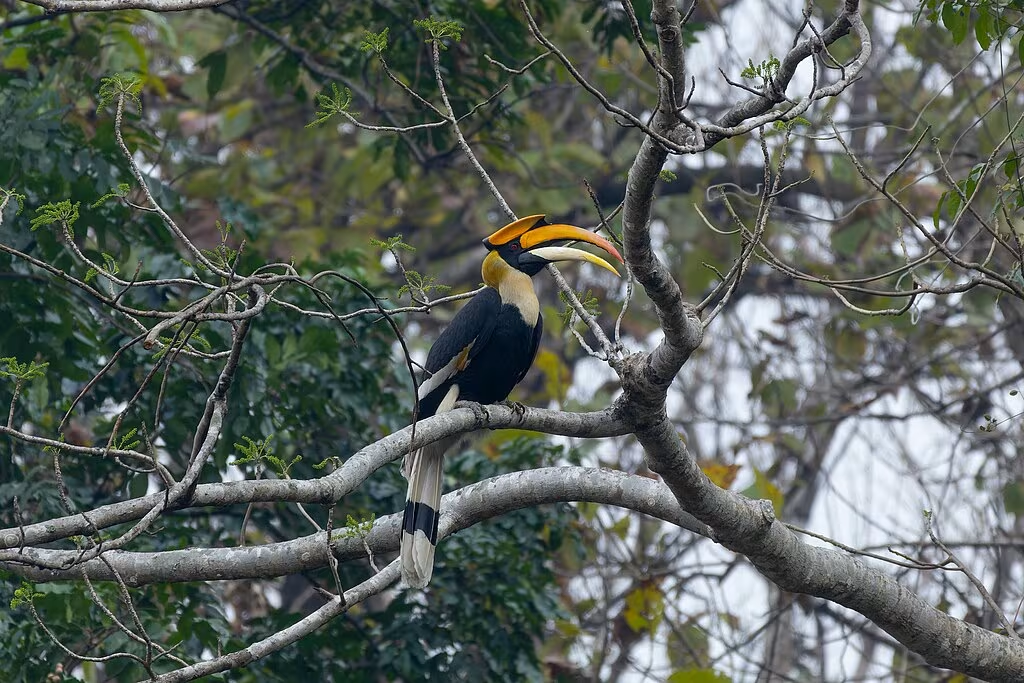
Best Time to Visit:
The ideal time for birdwatching in Rajaji National Park is from November to March, when the weather is pleasant and bird activity peaks. During these months, migratory birds flock to the area, increasing the chances of rare sightings. Early mornings are particularly rewarding for birdwatchers, as birds are most active then.
Nearby Attractions:
Visitors can explore the sacred Har Ki Pauri ghat, famous for its evening Ganga Aarti. The Chilla Dam offers scenic views and a peaceful setting for relaxation. Jungle safaris within the park provide opportunities to spot elephants, deer, and other wildlife. Haridwar city itself offers a blend of spiritual and natural attractions, making it a comprehensive travel destination.
14) Neel Dhara Pakshi Vihar
Neel Dhara Pakshi Vihar is located near the Bhimgoda Barrage in Haridwar, just a few kilometers from the famous Har Ki Pauri. Its riverside setting along the Ganges provides a serene environment for birdwatching. The sanctuary is easily accessible from Haridwar town, making it a convenient spot for both locals and tourists. Its proximity to major pilgrimage sites adds to its appeal.
This sanctuary is a paradise for migratory birds, especially during the winter months. The views of the Ganges and the lush riverbanks create an ideal habitat for a variety of bird species. Neel Dhara is also known for its sightings of rare species like the Siberian Crane. The peaceful atmosphere makes it perfect for nature walks and quiet observation.
Types of Birds Found in Neel Dhara:
Birdwatchers can expect to see Osprey, Brahminy Ducks, and various Waders in the sanctuary. During peak migration, Siberian Cranes and cormorants are notable highlights. The area also attracts other waterfowl and riverine birds. Early mornings are the best time to catch these species in action.
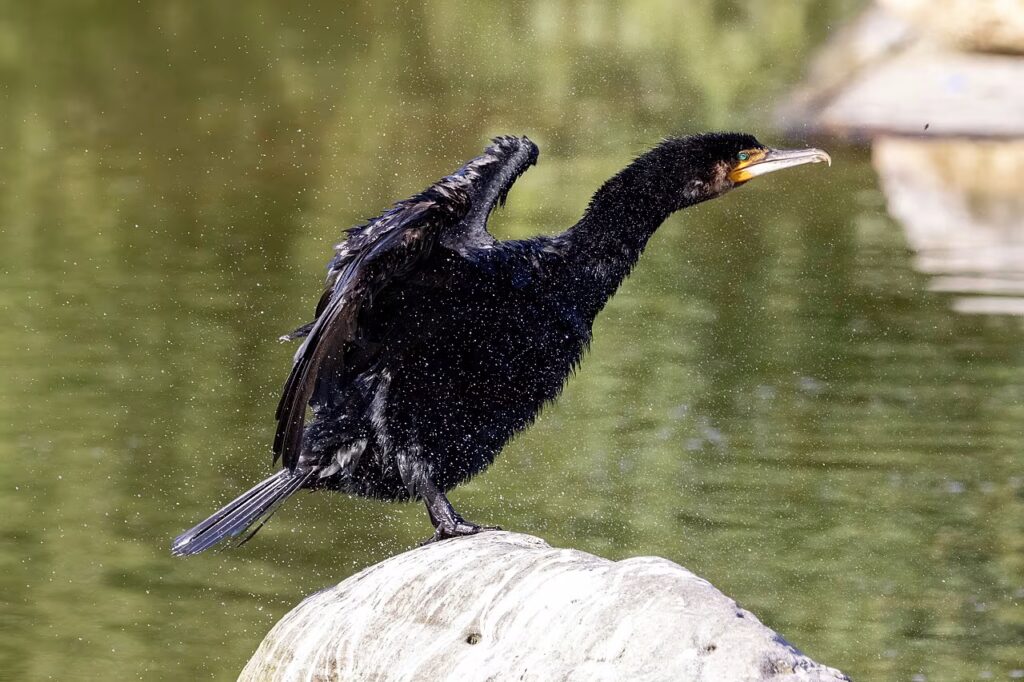
Best Time to Visit:
The winter months from October to March are considered the best time for birdwatching at Neel Dhara Pakshi Vihar. During this period, the sanctuary buzzes with migratory birds escaping the harsh northern winters. The cool weather and clear skies make for comfortable and rewarding birdwatching sessions. Early morning visits are especially fruitful for spotting rare species.
Nearby Attractions:
Haridwar town offers spiritual experiences like the Ganga Aarti at Har Ki Pauri. The Bhimgoda Barrage itself is a scenic spot for photography and relaxation. Visitors can also plan trips to Rajaji National Park for a more extensive wildlife experience. The area’s spiritual and natural attractions make it a well-rounded destination.
Dehradun
15) Asan Barrage
Asan Barrage is situated at the confluence of the Asan and Yamuna rivers, approximately 40 km from Dehradun. The site is easily accessible by road and is a popular stop for travelers heading to Himachal Pradesh. Its location amidst wetlands makes it a scenic spot for birdwatchers. The barrage is also close to the Dakpathar area, known for its natural beauty.
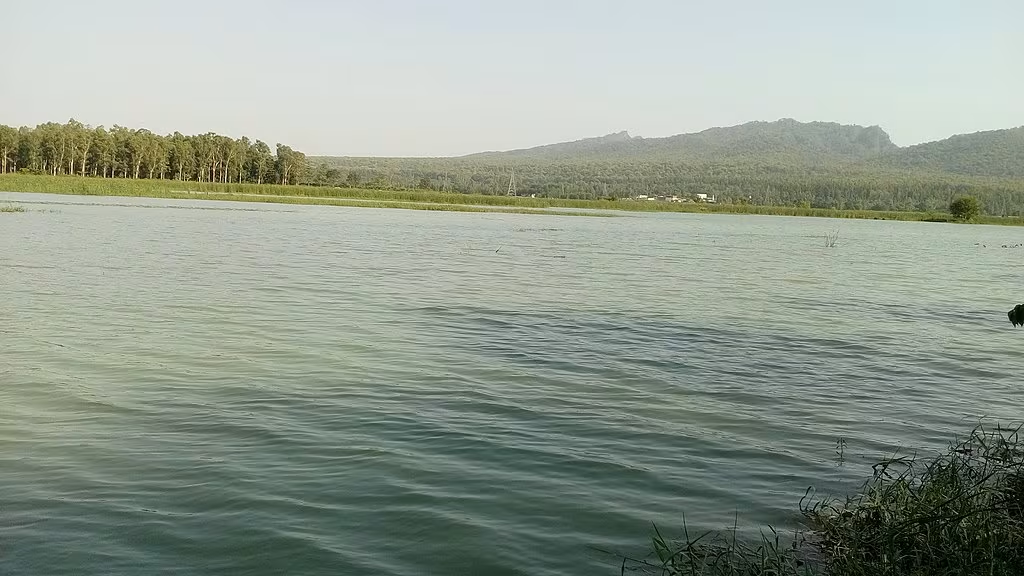
Asan Barrage holds the distinction of being Uttarakhand’s first Ramsar Wetland Site, emphasizing its global ecological importance. The wetland serves as a crucial habitat for migratory waterfowl and rare bird species. Its calm waters and marshy islands create perfect conditions for birds to feed and nest. The site is also popular for boating and nature photography.
Types of Birds Found Asan:
Birdwatchers can spot Ruddy Shelducks, Red-crested Pochards, and Common Teals at Asan Barrage. The area also attracts Bar-headed Geese, Egrets, Herons, and various other waterfowl during migration. The diversity of birdlife here makes every visit unique and exciting. Both resident and migratory species are regularly observed.
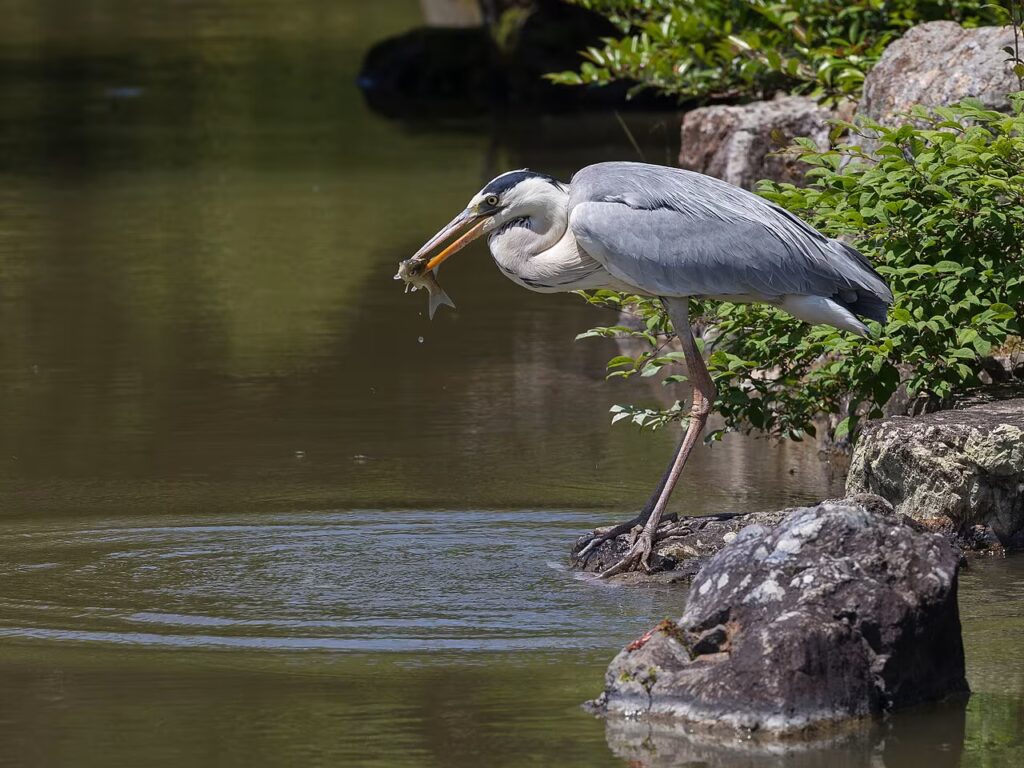
Best Time to Visit:
October to February is the prime birdwatching season at Asan Barrage. During these months, the wetland is teeming with migratory birds from Central Asia and beyond. Early mornings and late afternoons offer the best light and activity for sightings. The pleasant weather enhances the overall experience for visitors.
Nearby Attractions:
Dakpathar town offers scenic picnic spots and river views. The historic Kalsi rock edict is nearby and provides a glimpse into ancient Indian history. Boating on the barrage itself offers a different perspective for birdwatching. The proximity to Dehradun allows easy access to other attractions like Robber’s Cave and Sahastradhara.
(Personal Anecdote: I once saw over 100 Bar-headed Geese landing at sunset here—it was nothing short of magical. In addition to that, the boating adventure makes the experience even more worthwhile, you must try!)
16) Malsi Deer Park
Malsi Deer Park is located on the Mussoorie-Dehradun road, making it a convenient stop for travelers heading to the hill station. The park is known for its greenery, providing a cool escape from the city heat. It is easily accessible from Dehradun, just a short drive away. Its setting at the foothills of the Himalayas adds to its charm.
This compact ecological reserve is ideal for day visits and family outings. While primarily known for its deer population, the park also offers excellent bird watching opportunities. The well-maintained trails and picnic spots make it a favorite among locals. Its peaceful environment is perfect for both relaxation and nature observation.
Types of Birds Found in Malsi:
Visitors can spot Peafowls, Magpies, and Treepies regularly within the park. The area also attracts other woodland birds due to its diverse flora. The park’s manageable size makes it easy to explore and spot birds. Birdwatchers often find the early morning hours most productive.
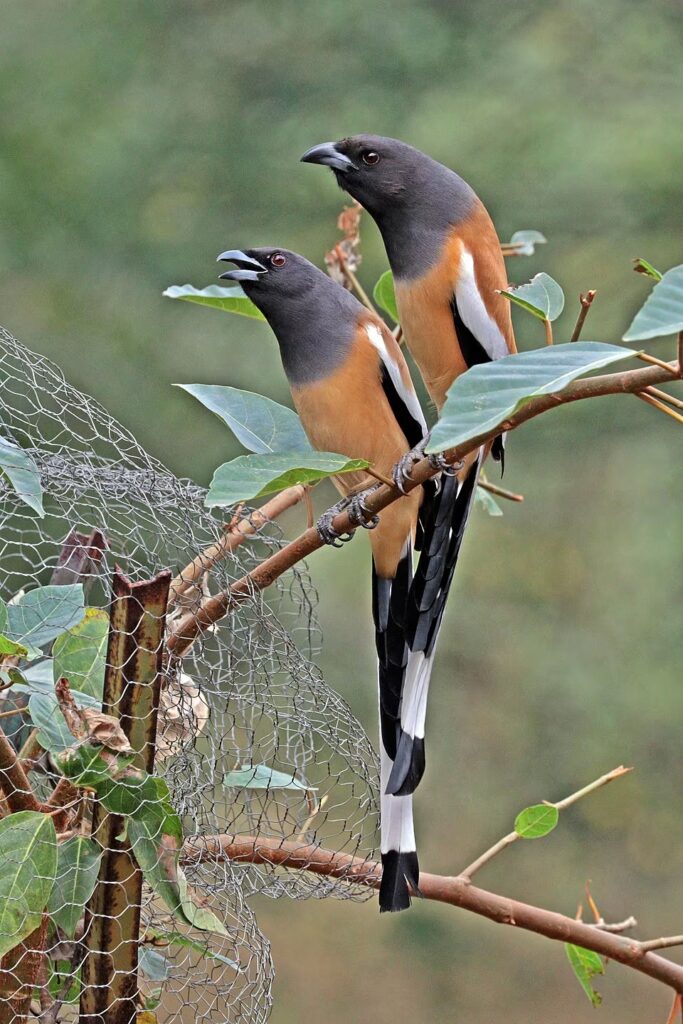
Best Time to Visit:
The best time for birdwatching at Malsi Deer Park is from November to March. During these months, the weather is pleasant and bird activity is high. Early mornings are especially rewarding for sightings. The park remains relatively uncrowded during weekdays, offering a peaceful experience.
Nearby Attractions:
Robber’s Cave, a popular picnic and adventure spot, is located nearby. Sahastradhara, known for its natural springs and caves, is also close. The renowned Forest Research Institute is a short drive away and offers historical and botanical insights. These attractions make Malsi Deer Park an ideal addition to any Dehradun itinerary.
17) Rajaji National Park (Dehradun side)
The Dehradun side of Rajaji National Park is accessed via the Motichur and Ranipur gates. These entrances are conveniently located near Dehradun, making the park easily reachable for city dwellers. The area features dense forests and open meadows, providing a diverse landscape for birdwatching. Its proximity to Rishikesh also makes it a popular choice for adventure seekers.
This section of Rajaji National Park is characterized by its dense sal forests and grassy meadows. The varied terrain supports a wide range of bird and animal species. The park is also known for its riverine habitats, which attract aquatic birds. Its location near the Ganges adds to its ecological significance.
Types of Birds Found in Rajaji:
Birdwatchers can expect to see Drongos, Minivets, Hornbills, and Eagles in this part of the park. The area is also home to various woodpeckers and flycatchers. The diversity of habitats ensures regular sightings of both forest and grassland species. Winter months bring an influx of migratory birds to the region.

Best Time to Visit:
November to March is the best period for birdwatching in this section of Rajaji National Park. The cooler weather and increased bird activity make for rewarding outings. The park’s natural beauty is at its peak during the winter season.
Nearby Attractions:
Rishikesh, known for its river rafting and spiritual retreats, is nearby. Nature walks along the Ganga river offer additional bird watching opportunities. The Motichur and Ranipur gates themselves are scenic spots for photography. Other nearby attractions include adventure camps and yoga ashrams. You can choose your destinations as per availability of time, but the area in itself is nothing short of a wholesome experience!
Almora
18) Binsar Wildlife Sanctuary
Binsar Wildlife Sanctuary is located about 30 km from Almora town in the Kumaon region of Uttarakhand. It has an approximate altitude of 2,400 meters. The sanctuary is accessible by road and is a go-to destination for birdwatchers and nature lovers. Its remote location provides an ideal escape from city life.
The sanctuary is renowned for its dense oak and rhododendron forests, which create a cool, misty environment perfect for diverse wildlife. It is a biodiversity hotspot supporting a wide variety of Himalayan flora and fauna. Binsar is famous for its Zero Point viewpoint, offering views the snow-capped mountains. The sanctuary’s peaceful atmosphere attracts trekkers, photographers, and bird enthusiasts alike.
Types of Birds Found in Binsar:
Binsar is home to over 200 bird species, including the melodious Laughing Thrush, the Monal, and the Forktail. Birdwatchers can also spot Himalayan Griffons, Cheer Pheasants, and Koklass Pheasants. The sanctuary supports both resident and migratory birds, making it a good birding destination. The rich avian diversity ensures rewarding sightings throughout the year.

Best Time to Visit:
March to June and October to November are the best months to visit Binsar Wildlife Sanctuary. During these seasons, the weather is pleasant, and bird activity is at its peak. Spring brings blooming rhododendrons, while autumn offers clear skies and clean air (a major attraction for the Delhi crowd). Early mornings provide the best opportunities for birdwatching and photography.
Nearby Attractions:
Visitors can trek to Zero Point for stunning Himalayan views and visit the spiritual site of Kasar Devi nearby. Almora town, with its rich cultural heritage and markets, is also close. These attractions complement the bird watching experience, providing a blend of nature and culture.
19) Jageshwar
Jageshwar is located approximately 36 km from Almora in the Kumaon region of Uttarakhand. Nestled amidst thick cedar forests, it is easily accessible by road from Almora. The area is known for its ancient temple complex and serene natural surroundings. Its location makes it a peaceful retreat for both spiritual seekers and birdwatchers.
Jageshwar is famous for its 124 ancient stone temples dating back to the 7th–12th centuries, set within a dense cedar forest. The combination of spiritual heritage and natural beauty creates a unique atmosphere. The environment is perfect for meditation, nature walks, and birdwatching. Jageshwar temple or Jageshwar Dham has been a hotspot for tourists in the recent past.
Types of Birds Found in Jageshwar:
Birdwatchers can spot Grey-headed Woodpeckers, Nuthatches, and Crested Kingfishers in the cedar forests. The area also hosts various thrushes, flycatchers, and warblers. The mix of forest and riverine habitats supports diverse bird species. Spring and early winter are the best seasons for birdwatching here.
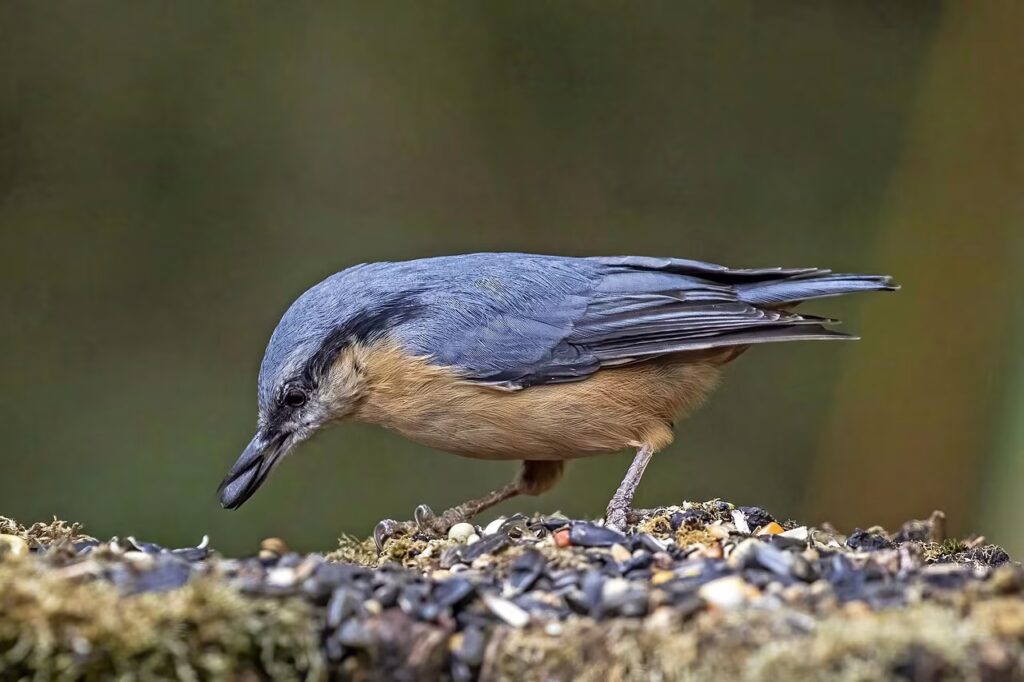
Best Time to Visit:
Spring and early winter offer the most pleasant weather and active birdlife in Jageshwar. During these months, migratory and resident birds are abundant. The clear skies and moderate temperatures enhance the overall experience. Early mornings remain the best time for birdwatching and photography.
Nearby Attractions:
The Jageshwar Dham temple complex is a major spiritual attraction nearby. The Archaeological Museum provides insights into the region’s history and culture. Almora town is also within easy reach for additional sightseeing and amenities.
20) Kasar Devi
Kasar Devi is located near Almora in the Kumaon region of Uttarakhand, on a hilltop overlooking the valley below. The night view from the top is something you cannot miss. It is accessible by road from Almora and is a popular destination for both spiritual seekers and nature lovers. The area is known for its peaceful atmosphere and scenic views. Its proximity to Almora makes it an ideal day trip or overnight stay, especially if you are planning a staycation.
Kasar Devi is famous for its mystical energy field, believed to be part of the Van Allen Belt, attracting yogis, artists, and spiritual seekers. The area offers a peaceful environment with panoramic views of the Himalayas. Its unique combination of spirituality and natural beauty makes it a top choice for visitors.
Types of Birds Found in Kasar Devi:
Birdwatchers can spot Eagles soaring above, colorful Sunbirds flitting among flowers, and active Flycatchers darting through the trees. The area’s mix of open skies and wooded hills creates diverse habitats. Seasonal migrants also visit Kasar Devi, depending on the time of your visit.

Best Time to Visit:
March to June and October are the best months to visit Kasar Devi for birdwatching and pleasant weather. During these periods, the skies are clear, and the bird activity is high. The moderate climate makes outdoor exploration enjoyable and you can even plan a picnic complemented with bird watching.
Nearby Attractions:
Crank’s Ridge, a popular spot for meditation and adventure sports, is nearby and you can divide your day into two halves to cover this destination. The historic Kasar Devi Temple is a must-visit for its spiritual significance. Several cafes and guesthouses offer relaxing spots in case you need a break. The town of Almora is close enough for additional cultural and shopping experiences.
Nainital
21) Pangot
Pangot is a cosy village located just 13 km from Nainital, in the Kumaon hills of Uttarakhand. It is easily accessible by road and serves as a popular extension for visitors to Nainital. The village is surrounded by dense forests and offers a cool, refreshing climate.
Pangot is renowned for its rich avian diversity, with over 250 bird species recorded in the area. The village’s oak, pine, and rhododendron forests make canopies for seasonal plants to thrive. Pangot also offers opportunities for trekking and nature walks.
Types of Birds Found in Pangot:
Birdwatchers can expect to see Cheer Pheasants, Khalij Pheasants, and various species of Niltavas in Pangot’s forests. Other notable birds include woodpeckers, thrushes, and blue whistling thrushes. The diversity of species makes every walk through the forest a new adventure.
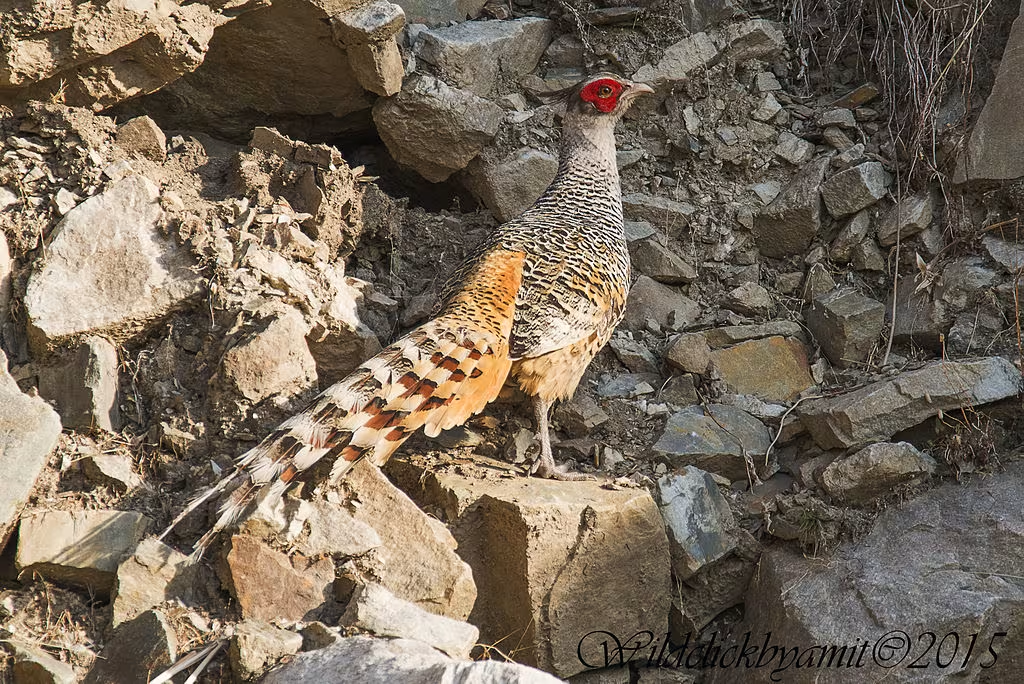
Best Time to Visit:
The best time to visit Pangot for birdwatching is from October to June. Spring and early summer are particularly rewarding due to the arrival of migratory species.
Nearby Attractions:
Visitors can explore Nainital town, including the famous Naini Lake and Snow View Point. The Himalayan Botanical Garden is nearby, offering more opportunities to connect with nature. Kilbury Bird Sanctuary, another renowned birding spot, is just a short drive away. These sites make Pangot an excellent base for a birdwatching holiday.
22) Kilbury Bird Sanctuary
Kilbury Bird Sanctuary is located within the Nainital Forest Division, close to Nainital town. It is easily accessible by road, just like Pangot, and is a favored spot for birdwatchers visiting the region.
Kilbury is one of Uttarakhand’s most popular bird sanctuaries, known for its rich biodiversity. The sanctuary’s varied forest types create a perfect habitat for a wide range of bird species. It is also a peaceful retreat for nature lovers and photographers. The sanctuary has well-marked trails for easy exploration. You can easily get through even without a local guide.
Types of Birds Found in Kilbury:
Birdwatchers can spot Brown Wood Owls, Thrushes, and various species of Tits in Kilbury. The sanctuary also hosts flycatchers, warblers, and woodpeckers. The diversity of birds makes it an exciting place for both beginners and experts. Seasonal migrants add to the sanctuary’s vibrant birdlife.
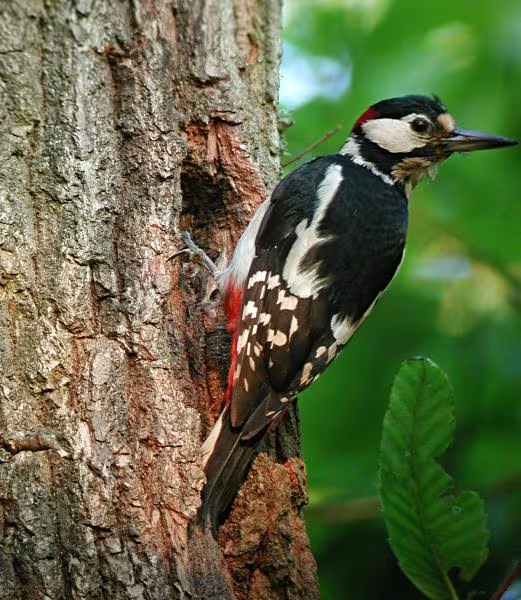
Best Time to Visit:
The best time to visit Kilbury Bird Sanctuary is from March to May and again in October. These months are favorite times as per recent visitors, both for birdwatching and photography. The sanctuary’s natural beauty is at its peak during these seasons.
Nearby Attractions:
Nearby attractions include the renowned Naini Lake and the popular trekking spot Tiffin Top. Nainital town offers a range of cultural and recreational activities. Boating in the evening is one of those. Visitors can also explore the Himalayan Botanical Garden. These sites complement a visit to Kilbury for a full nature experience.
23) Naukuchiatal
Naukuchiatal (yes you pronounced it right) is located about 26 km from Nainital. The town is centered around a unique nine-cornered lake (and thus the name) surrounded by hills. It is easily accessible by road and is known for its peaceful environment. You can even find plenty of local transport. The location offers an ideal blend of water and forest habitats for birdwatching.
The nine-cornered lake is the defining feature of Naukuchiatal, providing a serene setting for wildlife and birdwatching. The surrounding wooded hills support a variety of flora and fauna. The lake is also popular for boating and water sports. The combination of aquatic and forest ecosystems makes it a unique place for birdwatching.
Types of Birds Found in Naukuchiatal :
Birdwatchers can expect to see Kingfishers, Herons, and Cuckoos around Naukuchiatal. The lake attracts waterfowl, while the surrounding forests host woodland birds. Seasonal migrants also visit, enhancing the birdwatching experience. The area’s peaceful atmosphere makes it ideal for quiet observation.
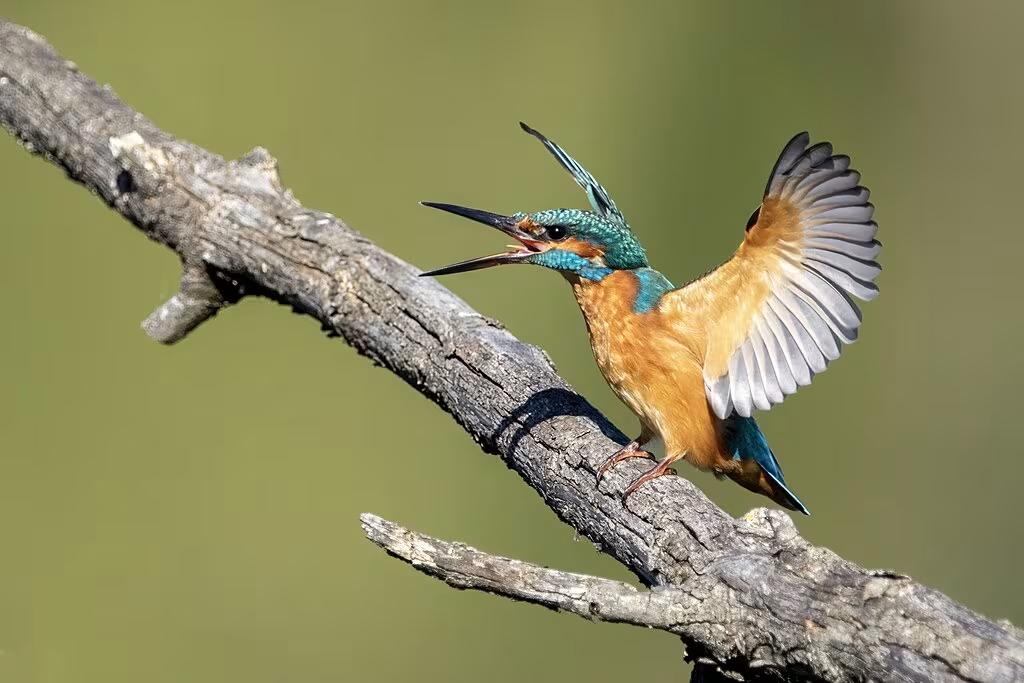
Best Time to Visit:
The best time to visit Naukuchiatal for birdwatching is from October to March. During these months, migratory birds are most abundant. Early mornings offer the best chances for bird sightings.
Nearby Attractions:
Boating on the lake is a popular activity for visitors. Nature walks around the wooded hills provide additional bird watching opportunities, and you can very easily spot some bright-colored rare species. The nearby Hanuman Temple offers an added touch of culture to your birdwatching experience.
24) Bhimtal
Bhimtal is situated about 22 km from Nainital. The town is centered around a scenic lake with an island aquarium, making it a popular tourist destination. It is accessible by road and you can go for a daytrip.
Bhimtal is famous for its picturesque lake, which includes an island aquarium that attracts families and tourists in the peak summer months. The area beautifully combines water-based recreation with peaceful natural settings.
Types of Birds Found in Bhimtal:
Birdwatchers can spot Egrets, Crested Serpent Eagles, and Coppersmith Barbets around Bhimtal Lake. The area also hosts kingfishers, herons, and various species of ducks. The diversity of habitats ensures sightings of both aquatic and woodland birds.
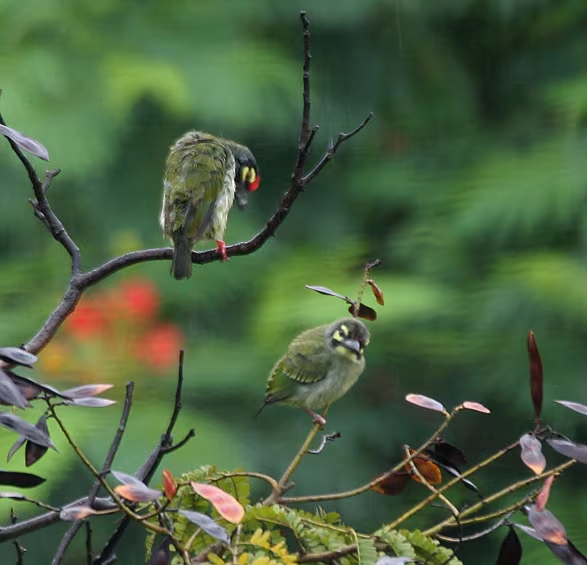
Best Time to Visit:
The prime time for birdwatching in Bhimtal is from November to February, when migratory birds arrive in large numbers. Visiting during this period also means fewer tourists and a more peaceful experience.
Nearby Attractions:
Apart from birdwatching, visitors can enjoy boating on Bhimtal Lake and explore the island aquarium.
Commonly Found Birds in Uttarakhand
Though it is not practically possible to list all the avian wonders that you can find in Uttarakhand, we have curated a list of the ones that are most commonly sighted at the aforementioned places. For bird enthusiasts, this will serve as a checklist to finalise their destination:
Migratory Birds
These are found mostly in the winter season, as it is the migration season for specific birds.
- Ducks
- Geese
- Waders
- Passerines
Raptors
- Eagles (Golden Eagle, Mountain Hawk-Eagle)
- Hawks
- Kites
- Vultures (Lammergeier)
Waterbirds
These are mostly found in wetlands like Asan Barrage.
- Ducks (Mallard, Gadwall, Northern Pintail)
- Geese (Bar-headed Goose)
- Egrets
- Herons
- Kingfishers
Himalayan Birds
- Himalayan Monal
- Koklass Pheasant
- Kalij Pheasant
- Cheer Pheasant
- Various species of laughingthrushes (White-throated Laughingthrush, Streaked Laughingthrush)
- Forktails
- Minlas
- Rosefinches
Resident Birds
- Himalayan Bulbul
- Black Bulbul
- Red-vented Bulbul
- Oriental Magpie-Robin
- Jungle Babbler
- Rufous Treepie
- Spotted Dove
- Common Myna
- House Sparrow
- Tits (Great Tit, Green-backed Tit)
- Warblers (Common Chiffchaff, Tickell’s Leaf Warbler)
- Woodpeckers (Himalayan Woodpecker, Grey-headed Woodpecker)
Note: Visit E bird directory to see all the birds of Uttarakhand.
Tips for A Smooth Bird Watching Experience
Take care of the following for a smooth bird watching experience in Uttarakhand, especially if it is your first time:
- Try to observe them in their natural habitat, without disturbing the surroundings much. This is the most prominent rule of ethical birding practices.
- In case you need a local guide, do not hesitate in hiring one. This will help you locate places better and enhance your knowledge even more.
- Keep your itinerary ready well in advance, to prevent any last minute hassles.
- Keep your water bottle handy and in case you carry food, do not litter the areas you visit. Follo Leave No Trace.
- Time your visit according to the activity of birds – early mornings and sunset time are the best.
- Carry your binoculars for further enhancing your experience.
Frequently Asked Questions
1) When is the best time for bird watching in Uttarakhand?
Spring and autumn are undoubtedly the best months for bird watching in Uttarakhand. This is mainly because of the presence of a large number of birds and good weather conditions. On the other hand, the migratory birds can be seen in the winter season.
2) How many species of birds can be seen in Uttarakhand?
As per estimates, around 650 to 700 species of birds are available for bird watching in Uttarakhand. Himalayan birds form the majority of this count, in addition to the migratory species that visit areas such as Asan Barrage. Rare species can also be seen in dense forest areas, known only by the tribal people.
3) Which is the most popular bird-watching place in Uttarakhand?
Pangot, Asan Barrage, and Binsar are some of the most popular bird-watching places. It is difficult to list one place in this list, as it would depend on individual preferences and time of visit.
Conclusion
In case you have still not made your mind on which bird watching destination to “flock to” first, this article will surely serve as a guide! In addition to finding migratory species as per the weather, you will also get to experience the blissful weather of the mountains, with many other natural wonders. To sum it up, it will definitely be worth every step and every little hardship in between!
Birdwatching in Uttarakhand is no longer confined to a leisure activity but has been described by recent visitors as something that makes them feel closer to nature. So what are you waiting for? Take your eyes to a captivating journey amidst the wetlands and sanctuaries around Uttarakhand, one at a time. You are sure to find more than what you are looking for!

Leave a Comment